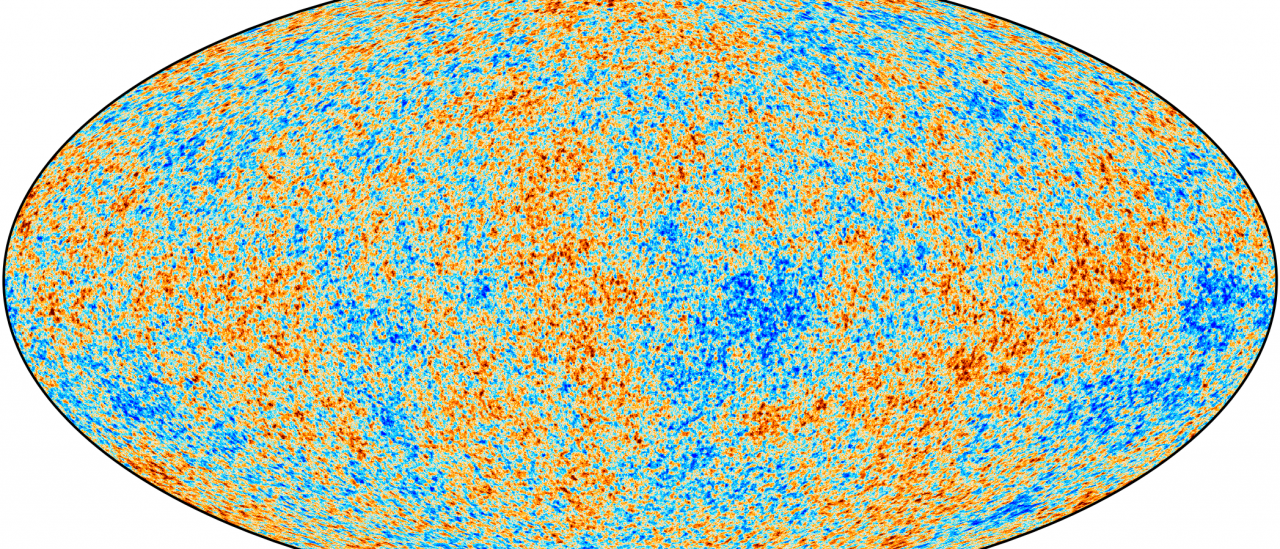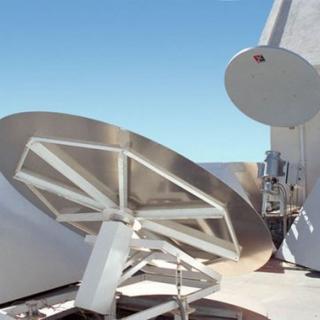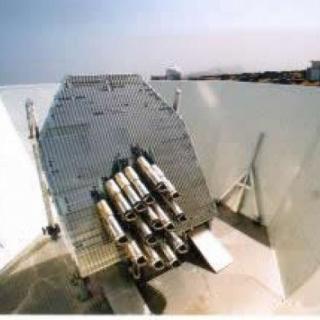Subvenciones relacionadas:
General
El objetivo general de este proyecto es determinar y estudiar las variaciones espaciales y espectrales en la temperatura del Fondo Cósmico de Microondas y en su Polarización en un amplio rango de escalas angulares que van desde pocos minutos de arco hasta varios grados. Las fluctuaciones primordiales en la densidad de materia, que dieron origen a las estructuras en la distribución de materia del Universo actual, debieron dejar una huella impresa en el Fondo de Microondas en forma de irregularidades en la distribución espacial de su temperatura. Experimentos pioneros como COBE (galardonados dos de sus investigadores principales con el Premio Nobel de Física en 2006) o Tenerife demostraron que el nivel de anisotropía en escalas angulares de varios grados está en torno a una parte en cien mil. La obtención de mapas del Fondo de Microondas en varias frecuencias y con sensibilidad suficiente para detectar estructuras a estos niveles es fundamental para obtener información sobre el espectro de potencias de las fluctuaciones primordiales en densidad, la existencia de un periodo inflacionario en el Universo muy temprano y la naturaleza de la materia y energía oscura. Más recientemente el satélite WMAP ha obtenido mapas del Fondo Cósmico de Microondas que han permitido establecer cotas sobre múltiples parámetros cosmológicos con precisiones mejores que el 10%.
El Proyecto concentra sus esfuerzos en realizar medidas a más alta resolución espacial y sensibilidad que las obtenidas por este satélite. En el pasado se utilizaron con este fin experimentos como Tenerife, el IAC-Bartol o el interferómetro JBO-IAC, todos ellos desde el Observatorio del Teide. Más recientemente, el experimento interferométrico Very Small Array a 33 GHz fue operativo entre 1999 y 2008. Durante este tiempo también realizó observaciones desde el observatorio del Teide el experimento COSMOSOMAS, cuyo objetivo era, además de la medida de las anisotropías del CMB, la caracterización de los contaminantes galácticos.
En los últimos 10 la actividad de este proyecto se ha centrado en la explotación científica de los datos del satélite Planck, y en la construcción, la operación y la explotación científica de los datos del experimento QUIJOTE. En la actualidad, una vez el proyecto Planck ha finalizado, la actividad se centra en la explotación científica de QUIJOTE, en el desarrollo y construcción de nueva instrumentación para el proyecto QUIJOTE, y en el desarrollo de nuevos experimentos que están siendo o que serán próximamente instalados en el Observatorio del Teide: GroundBIRD, LSPE-STRIP y TMS.
Miembros
Resultados
- 6-7 de junio: XV reunión científica del Consorcio QUIJOTE (IFCA, Santander)
- Julio: publicación de los resultados (12 artículos) y de los datos finales del satélite Planck.
- 15-19 de octubre: Congreso "CMB foregrounds for B-mode studies", dentro del proyecto Radioforegrounds, IV AME workshop, y XVI reunión científica del Consorcio QUIJOTE (todos estos eventos celebrados en el IAC).
- Octubre: instalación el observatorio del Teide de la cúpula de GroundBIRD.
- Diciembre: aceptación del tercer artículo científico de QUIJOTE (Poidevin et al. 2019)
Actividad científica
Publicaciones relacionadas
-
Strong Evidence of Anomalous Microwave Emission from the Flux Density Spectrum of M31
We have observed the Andromeda galaxy, Messier 31 (M31), at 6.7 GHz with the Sardinia Radio Telescope. We mapped the radio emission in the C-band, re-analyzed WMAP and Planck maps, as well as other ancillary data, and we have derived an overall integrated flux density spectrum from the radio to the infrared. This allowed us to estimate the emission
Buzzelli, A. et al.Fecha de publicación:
62019 -
QUIJOTE scientific results - III. Microwave spectrum of intensity and polarization in the Taurus Molecular Cloud complex and L1527
We present new intensity and polarization observations of the Taurus Molecular Cloud (TMC) region in the frequency range 10-20 GHz with the multifrequency instrument (MFI) mounted on the first telescope of the Q-U-I-JOint TEnerife (QUIJOTE) experiment. From the combination of the QUIJOTE data with the WMAP 9-yr data release, the Planck second data
Poidevin, F. et al.Fecha de publicación:
62019 -
The LOFAR Two-metre Sky Survey. II. First data release
The LOFAR Two-metre Sky Survey (LoTSS) is an ongoing sensitive, high-resolution 120-168 MHz survey of the entire northern sky for which observations are now 20% complete. We present our first full-quality public data release. For this data release 424 square degrees, or 2% of the eventual coverage, in the region of the HETDEX Spring Field (right
Shimwell, T. W. et al.Fecha de publicación:
22019 -
Improved CMB anisotropy constraints on primordial magnetic fields from the post-recombination ionization history
We investigate the impact of a stochastic background of primordial magnetic fields (PMF) generated before recombination on the ionization history of the Universe and on the cosmic microwave background (CMB) radiation. Pre-recombination PMFs are dissipated during recombination and reionization via decaying MHD turbulence and ambipolar diffusion
Rubiño-Martín, J. A. et al.Fecha de publicación:
32019 -
Planck intermediate results. LIV. The Planck multi-frequency catalogue of non-thermal sources
This paper presents the Planck Multi-frequency Catalogue of Non-thermal (i.e. synchrotron-dominated) Sources (PCNT) observed between 30 and 857 GHz by the ESA Planck mission. This catalogue was constructed by selecting objects detected in the full mission all-sky temperature maps at 30 and 143 GHz, with a signal-to-noise ratio (S/N)> 3 in at least
Akrami, Y. et al.Fecha de publicación:
112018 -
Exploring cosmic origins with CORE: Survey requirements and mission design
Future observations of cosmic microwave background (CMB) polarisation have the potential to answer some of the most fundamental questions of modern physics and cosmology, including: what physical process gave birth to the Universe we see today? What are the dark matter and dark energy that seem to constitute 95% of the energy density of the
Delabrouille, J. et al.Fecha de publicación:
42018 -
Exploring cosmic origins with CORE: The instrument
We describe a space-borne, multi-band, multi-beam polarimeter aiming at a precise and accurate measurement of the polarization of the Cosmic Microwave Background. The instrument is optimized to be compatible with the strict budget requirements of a medium-size space mission within the Cosmic Vision Programme of the European Space Agency. The
de Bernardis, P. et al.Fecha de publicación:
42018 -
Exploring cosmic origins with CORE: Inflation
We forecast the scientific capabilities to improve our understanding of cosmic inflation of CORE, a proposed CMB space satellite submitted in response to the ESA fifth call for a medium-size mission opportunity. The CORE satellite will map the CMB anisotropies in temperature and polarization in 19 frequency channels spanning the range 60–600 GHz
Finelli, F. et al.Fecha de publicación:
42018 -
Exploring cosmic origins with CORE: Cosmological parameters
We forecast the main cosmological parameter constraints achievable with the CORE space mission which is dedicated to mapping the polarisation of the Cosmic Microwave Background (CMB). CORE was recently submitted in response to ESA's fifth call for medium-sized mission proposals (M5). Here we report the results from our pre-submission study of the
Di Valentino, E. et al.Fecha de publicación:
42018 -
Exploring cosmic origins with CORE: Gravitational lensing of the CMB
Lensing of the cosmic microwave background (CMB) is now a well-developed probe of the clustering of the large-scale mass distribution over a broad range of redshifts. By exploiting the non-Gaussian imprints of lensing in the polarization of the CMB, the CORE mission will allow production of a clean map of the lensing deflections over nearly the
Challinor, A. et al.Fecha de publicación:
42018 -
Exploring cosmic origins with CORE: Cluster science
We examine the cosmological constraints that can be achieved with a galaxy cluster survey with the future CORE space mission. Using realistic simulations of the millimeter sky, produced with the latest version of the Planck Sky Model, we characterize the CORE cluster catalogues as a function of the main mission performance parameters. We pay
Melin, J.-B. et al.Fecha de publicación:
42018 -
Exploring cosmic origins with CORE: Extragalactic sources in cosmic microwave background maps
We discuss the potential of a next generation space-borne Cosmic Microwave Background (CMB) experiment for studies of extragalactic sources. Our analysis has particular bearing on the definition of the future space project, CORE, that has been submitted in response to ESA's call for a Medium-size mission opportunity as the successor of the Planck
De Zotti, G. et al.Fecha de publicación:
42018 -
Exploring cosmic origins with CORE: Effects of observer peculiar motion
We discuss the effects on the cosmic microwave background (CMB), cosmic infrared background (CIB), and thermal Sunyaev-Zeldovich effect due to the peculiar motion of an observer with respect to the CMB rest frame, which induces boosting effects. After a brief review of the current observational and theoretical status, we investigate the scientific
Burigana, C. et al.Fecha de publicación:
42018 -
Exploring cosmic origins with CORE: Mitigation of systematic effects
We present an analysis of the main systematic effects that could impact the measurement of CMB polarization with the proposed CORE space mission. We employ timeline-to-map simulations to verify that the CORE instrumental set-up and scanning strategy allow us to measure sky polarization to a level of accuracy adequate to the mission science goals
Natoli, P. et al.Fecha de publicación:
42018 -
Exploring cosmic origins with CORE: B-mode component separation
We demonstrate that, for the baseline design of the CORE satellite mission, the polarized foregrounds can be controlled at the level required to allow the detection of the primordial cosmic microwave background (CMB) B-mode polarization with the desired accuracy at both reionization and recombination scales, for tensor-to-scalar ratio values of
Remazeilles, M. et al.Fecha de publicación:
42018 -
The State-of-Play of Anomalous Microwave Emission (AME) research
Anomalous Microwave Emission (AME) is a component of diffuse Galactic radiation observed at frequencies in the range ≈ 10-60 GHz. AME was first detected in 1996 and recognised as an additional component of emission in 1997. Since then, AME has been observed by a range of experiments and in a variety of environments. AME is spatially correlated with
Dickinson, C. et al.Fecha de publicación:
22018 -
Relative Contribution of the Hydrogen 2 s Two-Photon Decay and Lyman- α Escape Channels during the Epoch of Cosmological Recombination
We discuss the evolution of the ratio in number of recombinations due to 2 s two photon escape and due to the escape of Lyman- α photons from the resonance during the epoch of cosmological recombination, within the width of the last scattering surface and near its boundaries. We discuss how this ratio evolves in time, and how it defines the profile
Rubiño-Martin, J. A. et al.Fecha de publicación:
12018 -
Planck intermediate results. XXVIII. Interstellar gas and dust in the Chamaeleon clouds as seen by Fermi LAT and Planck
The nearby Chamaeleon clouds have been observed in γ rays by the Fermi Large Area Telescope (LAT) and in thermal dust emission by Planck and IRAS. Cosmic rays and large dust grains, if smoothly mixed with gas, can jointly serve with the H i and 12CO radio data to (i) map the hydrogen column densities, NH, in the different gas phases, in particular
Planck Collaboration et al.Fecha de publicación:
102015 -
Evidence of the Missing Baryons from the Kinematic Sunyaev-Zeldovich Effect in Planck Data
We estimate the amount of the missing baryons detected by the Planck measurements of the cosmic microwave background in the direction of central galaxies (CGs) identified in the Sloan galaxy survey. The peculiar motion of the gas inside and around the CGs unveils values of the Thomson optical depth τT in the range 0.2 - 2 ×1 0-4 , indicating that
Hernández-Monteagudo, C. et al.Fecha de publicación:
112015 -
Planck intermediate results. XXV. The Andromeda galaxy as seen by Planck
The Andromeda galaxy (M 31) is one of a few galaxies that has sufficient angular size on the sky to be resolved by the Planck satellite. Planck has detected M 31 in all of its frequency bands, and has mapped out the dust emission with the High Frequency Instrument, clearly resolving multiple spiralarms and sub-features. We examine the morphology of
Planck Collaboration et al.Fecha de publicación:
102015
Charlas relacionadas
No se han encontrado charlas relacionadas.Congresos relacionados
-
XIX Canary Islands Winter School of Astrophysics "The Cosmic Microwave | Background: from quantum fluctuations to the present Universe"Tenerife, Canary IslandsEspañaFecha-Anteriores
Noticias
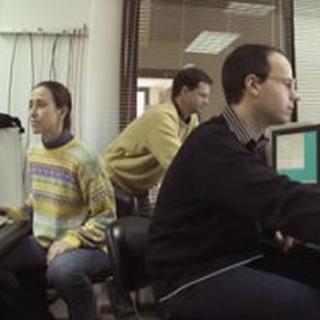
Participación del IAC en las misiones espaciales HERSCHEL Y PLANCK SURVEYOR. Desde el año 1996 el Instituto de Astrofísica de Canarias viene participando en la concepción y desarrollo de la carga útil científica de las misiones espaciales Herschel Space Observatory y Planck Surveyor de la Agencia Espacial Europea (ESA).
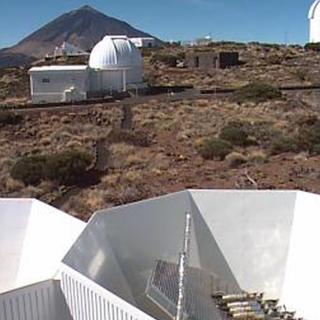
Mantenimiento del experimento COSMOSOMAS. Este instrumento estudia la radiación fósil que llega en forma de microondas, un tipo de luz que el ojo humano no puede captar pero que impregna todo el Universo. Actualmente se realizan tareas de puesta a punto para conseguir fiabilidad en la calidad de los datos y mejorar la seguridad de las instalaciones
